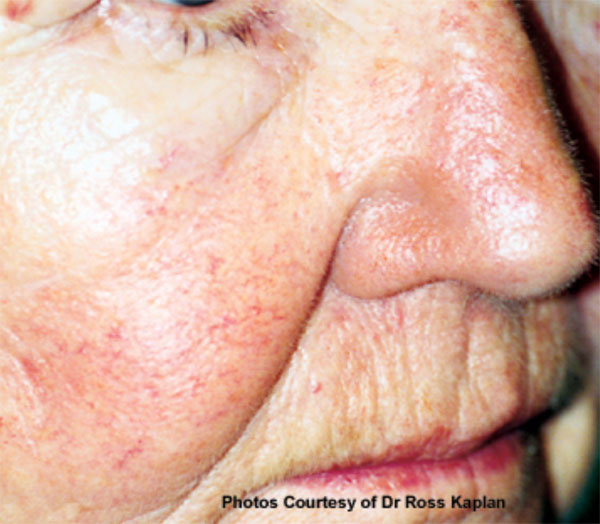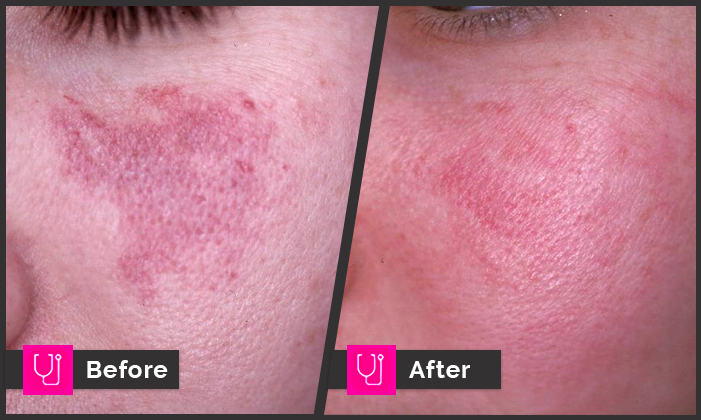


However, with newer v-beam laser treatments, there may not be any marks at all. The treated area can be sore and swollen for a couple of days. This is due to the laser instrument's size the black marks disappear within 1–3 weeks.

#Port wine stains treatment skin#
With older laser treatments the skin is filled with black marks, the size of a pen. Treatment is generally given before one year of age. The use of topical rapamycin as an adjunct to pulsed dye laser may improve results. Up to 10 treatments may be necessary for improvement, but complete removal may not result. The trials only followed people for six months, so long-term outcomes are not known. There can be pain, crusting, and blistering in the two weeks after treatment. Adverse effects were rare in these trials, although some people had changes to the color of the skin, especially Chinese people with darker skin. Lasers and other light sources may therefore be able to reduce the redness of port-wine stains, although there is not enough evidence to recommend one form over another.įor most people in trials of pulsed dye laser, more than 25% of the redness was reduced by laser after one to three treatments. Lasers may be able to destroy the capillaries without significant damage to the overlying skin. Many treatments have been tried for port-wine stains including freezing, surgery, radiation, and tattooing port-wine stains can also be covered with cosmetics. If swelling occurs in the port-wine stain, it may cause vision problems, glaucoma, or blindness. If the port-wine stain is around the eye or on the eyelid, a referral may be made to an optometrist or ophthalmologist for a test of the ocular pressures in that eye. If the port-wine stain is inside the mouth, a provider may check the insides of a newborn baby's throat with a scope to see if there are any changes (growths) other than just the color. Depending on the location of the birthmark and other associated symptoms, a physician may choose to order a measurement of intraocular pressure or X-ray of the skull.Īn MRI of the brain may be performed (under anesthesia) on infants who have a port-wine stain in the head area in order to check for signs of Sturge–Weber syndrome. In unusual cases, a skin biopsy may be needed to confirm the diagnosis. Diagnosis Thomas Handasyd Perkins, American slaver and merchant with a prominent port-wine stain on his cheekĪ healthcare provider can usually diagnose a port-wine stain based entirely upon the history and appearance. An association with RASA1 has also been described. Port-wine stains were shown to be caused by a somatic activating c.548G→A mutation in the GNAQ gene. Nevus flammeus may be divided as follows: Types Mikhail Gorbachev, last leader of the Soviet Union, with a prominent port-wine stain on his forehead Port-wine stains may be part of a syndrome such as Sturge–Weber syndrome or Klippel–Trénaunay–Weber syndrome. In adulthood, thickening of the lesion or the development of small lumps may occur. As the child matures, the color may deepen to a dark red or purplish color. Early stains are usually flat and pink in appearance. Port-wine stains occur most often on the face but can appear anywhere on the body, particularly on the neck, upper trunk, arms and legs. The area of skin affected grows in proportion to general growth. Port-wine stains persist throughout life. They are so named for their coloration, which is similar in color to port wine, a fortified red wine from Portugal.Ī port-wine stain is a capillary malformation, seen at birth. The back of a hand with prominent port-wine stainingĪ port-wine stain ( nevus flammeus) is a discoloration of the human skin caused by a vascular anomaly (a capillary malformation in the skin).


 0 kommentar(er)
0 kommentar(er)
